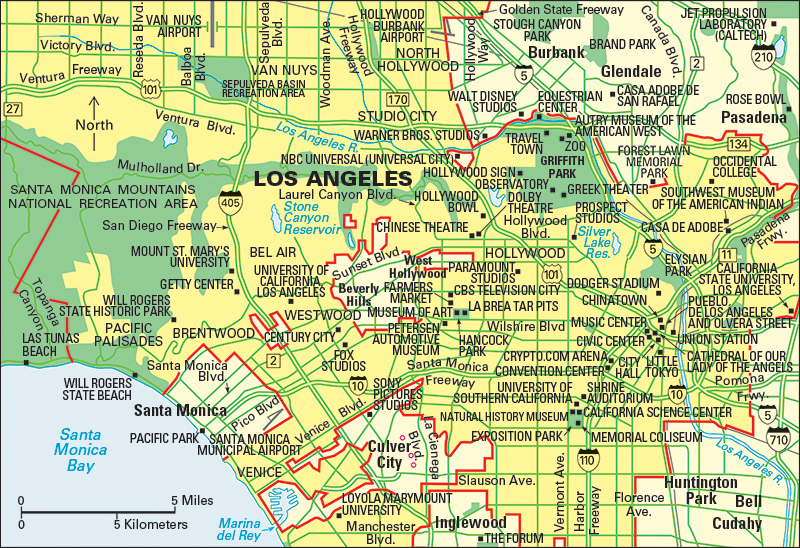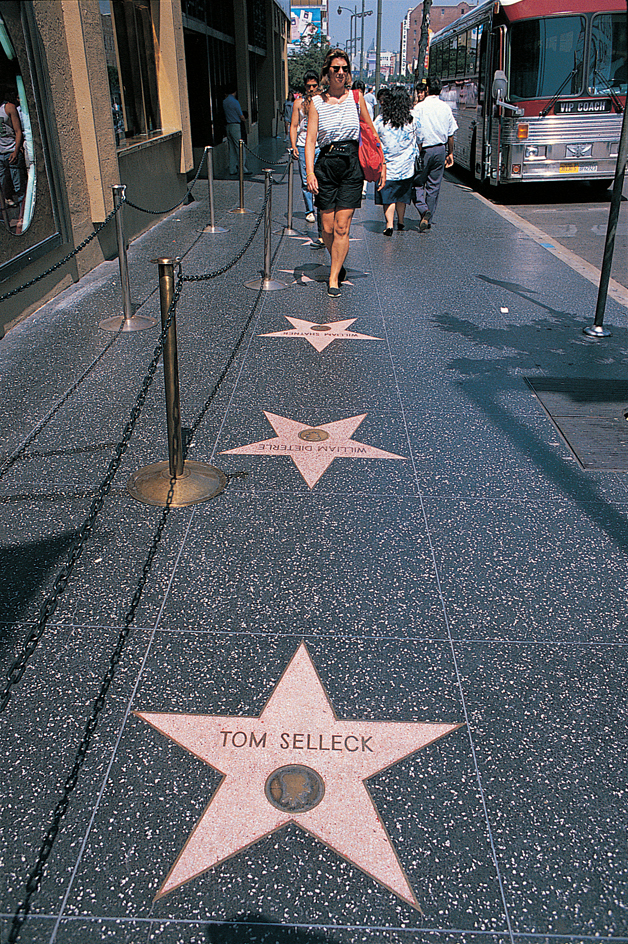Hollywood, California, is generally considered the motion-picture capital of the world. It is not an incorporated city, but a district of Los Angeles. Hollywood extends from Griffith Park and Mulholland Drive on the north to Melrose Avenue on the south, and from about Hyperion Avenue on the east to about Crescent Heights Boulevard on the west.

The Hollywood Bowl is a famous open-air theater. It is known for its symphony programs, concerts, and Easter services. The popular Walk of Fame consists of more than 2,000 bronze stars set in the sidewalks along Hollywood Boulevard and Vine Street. Each star has the name of a different Hollywood celebrity. The huge “Hollywood” sign, a landmark built in the hills above the district in 1922, was restored in 1978. Each letter of the sign is 45 feet (14 meters) tall. Hollywood was long known for “The Strip,” a section of Sunset Boulevard with many restaurants, gift shops, theatrical agencies, and nightclubs. The section of Hollywood that included “The Strip” was incorporated in 1984 as the city of West Hollywood.

One adobe hut stood on the site of Hollywood in 1853. By 1870, the area had many farms. It was incorporated as Hollywood in 1903. In 1910, it voted to join Los Angeles to gain access to that city’s water supply.
The Nestor Company built the first motion-picture studio in Hollywood in 1911. Hollywood became a center of the motion-picture industry because it has a mild, dry climate, and because it lies in an area with a vast variety of natural scenery. Within 200 miles (320 kilometers), almost every kind of scenic background is available to moviemakers. The production of sound films began in Hollywood in the late 1920’s and resulted in the building of huge sound stages. Many of these stages are now used for making television films.
